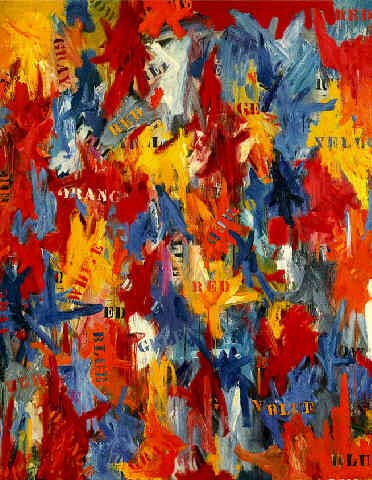 This is a true story. You can find the original article at Snopes. It caused me to wonder…. If an iconic artist like (say) Jasper Johns was selling art on a sidewalk – would we recognize him? Would we see the mastery in his work?
This is a true story. You can find the original article at Snopes. It caused me to wonder…. If an iconic artist like (say) Jasper Johns was selling art on a sidewalk – would we recognize him? Would we see the mastery in his work?
A Most Interesting Story…..
A man sat at a metro station in Washington DC and started to play the violin. It was a cold January morning. He played six Bach pieces for about 45 minutes. During that time, since it was rush hour, it was calculated that thousands of people went through the station, most of them on their way to work.
Three minutes went by, and a middle aged man noticed there was a musician playing. He slowed his pace and stopped for a few seconds – and then hurried up to meet his schedule.
A minute later, the violinist received his first dollar tip: a woman threw the money in the till and without stopping – continued to walk.
A few minutes later, someone leaned against the wall to listen to him, but the man looked at his watch and started to walk again. Clearly he was late for work.
The one who paid the most attention, was a 3 year old boy. His mother tagged him along, hurried – but the kid stopped to look at the violinist. Finally the mother pushed hard and the child continued to walk – turning his head all the time. This action was repeated by several other children. All the parents, without exception, forced them to move on.
In the 45 minutes the musician played, only 6 people stopped and stayed for a while. About 20 gave him money, but continued to walk their normal pace. He collected $32. When he finished playing and silence took over, no one noticed it. No one applauded, nor was there any recognition.
No one knew this but the violinist was Joshua Bell, one of the best musicians in the world. He played one of the most intricate pieces ever written, with a violin worth 3.5 million dollars.
Two days before his playing in the subway, Joshua Bell sold out at a theater in Boston and the seats average $100.
This is a real story.
Joshua Bell playing incognito in the metro station was organized by the Washington Post as part of a social experiment about perception, taste and priorities of people. The outlines were:
in a commonplace environment at an inappropriate hour: Do we perceive beauty?
Do we stop to appreciate it?
Do we recognize the talent in an unexpected context?
One of the possible conclusions from this experience could be:
If we do not have a moment to stop and listen to one of the best musicians in the world – playing the best music ever written, how many other things are we missing?
—————————————————————–
Great story don’t you think? Getting back to my Jasper Johns analogy – I’ve seen some amazing art on the streets of New York and Berlin – how many of us have walked past a true artistic genius without even a thought? I’m sure I have.



This is a clever—but not great—story and social experiment. However, it is hardly scientific or fair: the outcome was pre-determined by the logistics of the set-up. People could not stop or they would be late for work. Period. A fairer observance of (social) tendencies toward art would have been to put Mr Bell in a park or other public space where peoples' minds are not set on rushing to their life-sustaining destination in a crowded subway first thing in the morning.
I see where you want to go with this, but "taking a moment" to smell the roses is not an appropriate lesson with this particular experiment. The lesson is rather this: No matter what you do in the subway, don't expect people to risk being fired or miss a potential meeting at work to stop and watch or listen. Gee, thanks, now we know!
By the way, your initial question regarding context is interesting and constantly being challenged by artists themselves. Mastery in contemporary art, however, is surely different than mastery of a classical instrument. My guess is if you miss sheer unadulterated mastery on the street, you will surely miss it in a museum or gallery—although being TOLD something is great due to context or even popularity and regurgitating that "knowledge" is done constantly in the art world by dealers and patrons alike. I think your point is that we should all slow the hell down. Cheers to that.